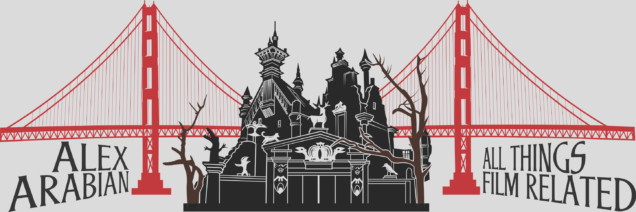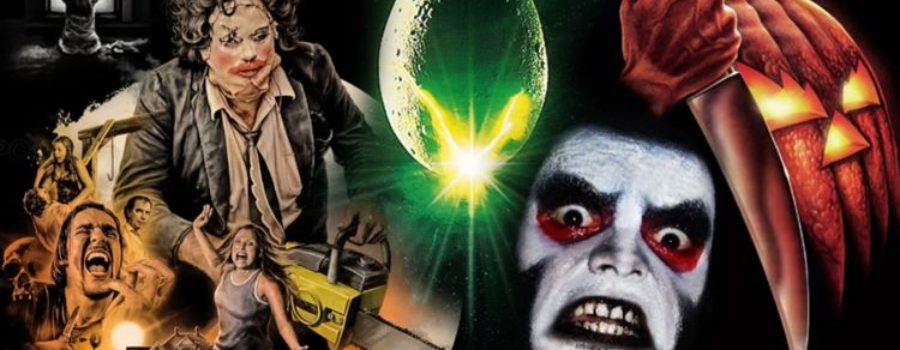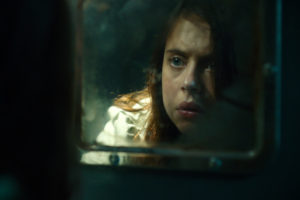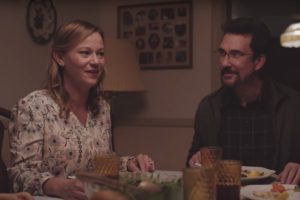[Published at MovieWeb] If one is going for scares, the horror genre is arguably the hardest to get right. Even tougher than attempting to garner laughs in comedy films, horror filmmakers not only have to perfect the art of pacing and building tension, but they also must have their finger on the pulse of topical – or timeless – sociopolitical issues. They also must know their audience in relation to the myriad of subgenres within horror. Whether they’re making slasher, supernatural, psychological, or body horror films, horror audiences are extremely well-informed and often overly critical of genre clichés. As such, horror continuously reinvents itself, both for its audience and to keep up with the times.
We’re almost in the month of October, and that means the holiday that inspires so many great horror films is right around the corner. Of course, one doesn’t need October 31 for inspiration to make a great horror film, but Halloween always gets us in the horror spirit. And so, with that in mind, we’ve decided to examine the ten scariest horror films ever made.
10 The Exorcist

The Exorcist is the prototype for the countless, lesser possession films that would come out after its 1973 release. A film about a twelve-year-old girl named Regan (Linda Blair) who becomes possessed after an elderly priest unwittingly releases a demon. At the time, audiences were both repulsed and inexplicably drawn to the film, as is often the case – reflective of our collective fixation with the horror genre – with scary movies. Viewers puked, fainted, and even one woman in New York reportedly miscarried during a screening. These severe audience reactions prompted both protests, as well as theaters to provide Exorcist-themed barf bags and hire ambulances outside in case any further health issues arose among its audiences. Who could really blame viewers for fainting or vomiting up their popcorn? Nobody had seen anything like it at the time – many scenes were controversial, but one, in particular, which included Regan stabbing her nether regions with a crucifix while shouting, “F*ck me, Jesus,” proceeding to force her mother’s face on her bloody wounds, went down in history as one of the most sickening, scarring scenes ever committed to celluloid. The Exorcist remained the highest grossing R-rated film until 2017’s It.
9 Halloween

Giallo films often featured a protagonist drawn into a murder or series of brutal murders (often seen from a first-person perspective, contained inexplicable twist endings and killer reveals, and often emphasized style over logic. John Carpenter took the first-person killer-with-knife style of Italian Giallo films and ran with it in Halloween – or, in the case of Michael Meyers, walked ominously slow with it. Halloween embraces the traditional, controversial final girl horror trope, focusing on Laurie Strode as the naive victim-turned-heroin. Originally titled The Babysitter Murders, the film shows Michael Meyers preying upon teenage women. Halloween set a precedent in horror, with the surviving virgin in the final girl trope often serving as an unofficial “rule” within the slasher subgenre for decades to come. If the final girl preserves her moral purity in the form of abstinence and sobriety, she will survive, while those who engage in premarital sex and partake in either alcohol and drug consumption will die at the hands of the killer – in this case, the unsettlingly indestructible Michael Meyers.
8 The Shining

Stanley Kubrick brilliantly adapted Stephen King’s eponymous novel with The Shining, a film about a writer’s descent into madness at a haunted hotel during its offseason. The intensity of Jack Torrance’s (Jack Nicholson) isolation increases in every subsequent frame of the film. Fans still quote the enduring lines, “All work and no play make Jack a dull boy,” “Redrum,” and “Danny’s not here, Mrs. Torrance.” Of all the film’s themes, one could argue that working-from-home, especially with writer’s block, has its ups and downs – of course not everyone has a hotel with ghosts influencing their murderous actions. It’s an extreme case of family dysfunction amidst an unhealthy work-life balance imposed upon oneself, with a hint of cabin fever and an unfortunate haunting. Let’s just say, its characters – and audiences – should beware of Room 237. In 2018, nearly 40 years after its release, The Shining was chosen to be forever preserved in the United States National Film Registry by the Library of Congress for being “culturally, historically, or aesthetically” significant.
7 Alien

Ridley Scott’s Alien isn’t your average horror film. Why? Because of its minimalism, its sci-fi overtones, and the fact that it takes place entirely in space. One might even consider it a sci-fi movie more than it is a horror film. However, that doesn’t take away from the overwhelming sense of dread throughout its 117-minute runtime. It is a masterclass in slowly building suspense, jump scares, and gross-out body horror. From its opening scene of isolated space travel, a piercing silence builds a palpable sense of tension. The government-sanctioned mining crew gets more than they bargained for when they discover the perfect killing machine. It’s not only an allegory for the U.S. government’s careless treatment of its military troops abroad, but also one for sexual assault, this time in the form of a female assaulting men as “payback” for the overabundance of male-on-female rape seen in horror before the film’s release. Barbara Creed referred to the alien as the “monstrous-feminine as archaic mother” in her novel “Alien Zone: Cultural Theory and Contemporary Science Fiction Cinema,” a term coined by Sigmund Freud, depicting the archaic mother as a malicious seductress. In the case of the facehugger, according to screenwriter Dan O’Bannon, it builds upon the cis male’s fear of sexual penetration. Aside from the intelligent allegorical undertones, there’s a reason why the Oscar-winning Alien was considered “culturally, historically, or aesthetically significant” by the Library of Congress and preserved in the United States National Film Registry, and its sequel, Aliens, was not – it doesn’t fall victim to showing too much, leaving most of the horror to the viewer’s imagination.
6 Psycho

The American slasher genre would not exist without Psycho and the Italian Giallo subgenre within film that rose to fame in the late 1960s and the 1970s. Headed by Dario Argento, the Giallo subgenre earned took its name from the classic, pulp, mystery detective novels that typically had yellow (“giallo” in Italian) covers. Both of these genres were soaked in mystery and turned up the volume on the scares, with the slasher genre generating particularly brutal murder scenes. Even before Giallo, the slasher genre was partially inspired by Alfred Hitchcock’s Psycho, a film about a man’s (Anthony Perkins) horrifying obsession with his mother and the Freudian perils of parents prohibiting their children from being autonomous adults for fear of having empty nest syndrome. Lest we forget the famous shower scene, which featured the first-person stabbing angle that would become a staple in both Giallo and the slasher films of the 1980s. Initially heavily censored because of its violence and commentary about gender and sexuality, it was later chosen to be preserved in the National Film Registry in 1992 by the Library of Congress for being “culturally, historically, or aesthetically significant.”
5 The Texas Chainsaw Massacre

Tobe Hooper’s The Texas Chainsaw Massacre is an exploration of the bizarre macabre. Taking after the themes of Wes Craven’s The Last House on the Left in 1972, the film explores the most extreme version of American freedom and the essence of cult, releasing five years after the Manson murders in 1969 and one year before the end of of the Vietnam War in 1975. If John Carpenter played with the appeal of the suburbs in Halloween – to get away from the intrusive nature of the city and enjoy a private setting within a self-contained nucleus of similarly financially well-off families – creating a sense of isolation, Hooper took this concept to a rural setting. His perversion of the nuclear family echoed both the popularity of cult fascination among the American people at home, and the senseless, brutal violence of imperialistic endeavors abroad – the idea of democratizing, or forcing one’s beliefs upon other people to the point of destruction. If cult is the ultimate expression of freedom of expression, then imperialism abroad is the antithesis – the opposite of that notion. It’s no coincidence that Hooper chooses hippies – who were both opponents of the Vietnam War, as well as a large portion of the makeup of the extended Manson family – as his victims – highlighting the often hypocritical nature of the “American way.”
4 Suspiria (1977)

About an American ballet student, Suzy Bannion (Jessica Harper), who transfers to a prestigious dance academy in Germany with her career hopes held high – eventually discovering that the academy is actually headed by a murderous coven of witches – Suspiria is one of the most unique and ingenious horror films ever made, and arguably Dario Argento’s best Giallo film. With an iconic, repetitively hypnogogic Goblin score blasting over scenes that largely shy away from the typical single-person murder mystery plot elements present in earlier iterations of the Giallo genre, Suspiria ventured into the supernatural. The film is a masterclass in building tension, an early prototype for body horror features to come, and serves as one of the most nauseatingly scary films of all time – with a murder scene so brutal, eight minutes was cut out of the American version in order for it to pass as an R-rated film. Suspiria directly influenced John Carpenter’s Halloween, which, of course, influenced the reinvention of the slasher horror subgenre, primarily existing in American cinema.
3 Poltergeist

Poltergeist explores common horror genre anxieties such as the supernatural, clowns, dysfunctional technology, and the loss of family. Another horror critique of the suburbs, the film can be seen as the an allegory for the most extreme, capitalistic form of bringing the nuclear family back to the suburbs (first, in the 1950s, then in the 1980s) in the age of Reaganism. Cuesta Verde’s – the housing development in which the Freeling family lives – downfall represents the sociopolitical backlash of Reagan’s return to the suburbs mentality. After all, their house was haunted because the property was knowingly built over a cemetery. The real estate deal was made without a single regard for the dead so as to make a quick buck. The consequences were dire – their daughter was held hostage by the ghosts of the dead laying under the house, their son was almost eaten by a tree come alive, assaulted by a toy clown, and their pool was overflowed by the coffins upon which the house was constructed. For a family film rated PG, Poltergeist trumps almost every R-rated horror film ever made.
2 Hereditary

Ari Aster seems to make it a point to scar his audiences with both Hereditary, his feature directorial debut, and Midsommar. With Hereditary, he instantly made a name for himself in the vast annals of the horror archives in film history, succeeding in making both a film about possession that separated itself from the countless Exorcist knockoffs, and a haunting film about the destruction of a suburban family – both themes that have been explored to lesser degrees in the horror genre. With the help of Toni Collette’s Oscar-worthy performance, he depicts a family slowly unraveling as a result of loss, grief, anger, and supernatural intervention. Perhaps the most scarring scenes remain the ones in which the son (Alex Wolff) drives his sister’s (Milly Shapiro) head into a telephone pole, knocking it clear off, and Collette, while possessed, saws her own head off. Of all the films on this list, including The Exorcist, Hereditary could arguably be considered the most psychologically scarring. It will leave you haunted with the grotesque images it implants into your mind.
1 The Blair Witch Project

Although Cannibal Holocaust is considered to be the first found-footage film, The Blair Witch Project re-popularized the subgenre in 1999. At the time of its release, the film – about a group of student filmmakers who venture into the mysterious Black Hills near Burkittsville, Maryland (actually Germantown, Maryland in real life) to discover if the notorious legend of the Blair Witch is real – left audiences terrified. Using largely inexperienced actors, the film expertly used its 35-page script to improvise much of the dialogue, adding to the feel of a real home movie. The critical and commercial success of the film launched two sequels. However, by the time of their release, the found-footage genre had been largely oversaturated – and that’s solely due to the groundbreaking horror of The Blair Witch Project.








Leave a Reply
Your email is safe with us.